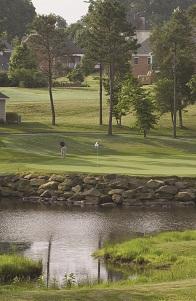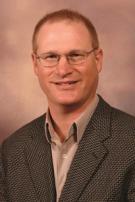

Like other pursuits, golf has been affected by the uncertain economy, and in some areas, bad weather conditions also are blamed for suppressing participation. Golf, along with other activities, has faced additional challenges that include competing for consumers’ limited time (it takes about four to five hours to play 18 holes) and limited discretionary dollars.
Still, the numbers are strong. About 81 percent of the nearly 26 million recreational golfers in the U.S., are male, according to the NGF, and the average annual household income of golfers is $85,100. The typical golfer plays on average 18 rounds a year, and in 2011, there were 463 million rounds of golf played. The heart of the golf market is the 14.4 million “core” golfers in the U.S., who play at least 30 rounds a year.
Additionally, people are still enthusiastic about the sport, and are taking it up. In 2011, 3.5 million golfers were either first-time beginners (1.5 million) or those who returned after not having played in over a year, according to the NGF. The latest available NGF figures also show there are 2.4 million junior golfers, ages 6 to 17, who play, on average, 13.2 rounds a year.
The best news, though, is that the golf industry has been aggressively addressing the decline in participation and rounds played, and especially targeting younger players, women and minorities with initiatives designed to get them into the game.
Among the initiatives is the PGA’s “Golf 2.0” strategic plan, which aims to boost the golf industry at all levels. Goals include more of a focus on golf as a family activity, along with new ways of playing that don’t require the hours-long time commitment and make the sport more inviting for players of all ages and abilities.
Another major push is “The First Tee,” an international initiative whose mission is to impact kids through educational programs that build character, instill life-enhancing values and promote healthy choices through the game of golf. Since 1997, First Tee has reached more than 6.5 million participants in the U.S. Golf also should get a major boost from being added back to the Olympics as an official sport starting with the 2016 Summer Olympics in Rio de Janeiro.
Throughout the U.S., golf remains immensely popular and not only draws players, but importantly, tournaments and events. And golf event planners and rights holders looking to place their next tournament have some terrific options to consider.

After Charles Coody won the 1971 Masters Tournament, he decided to build a golf course in his hometown of Abilene. “My goal was to build a public golf facility that is always maintained in excellent condition and one which could be enjoyed by all levels of golfers,” he says. The result was the 220-acre Diamondback Golf Club, opened in 1999 and home to dozens of golf events every year.
“It’s a great course, and it’s won many awards,” says Debi Schultz, the sports sales director for the Abilene CVB. Among other honors, Diamondback has been ranked No. 1 by the Dallas Morning News and voted No. 2 best public course in Texas by the PGA.
Abilene also is home to other courses that work closely with the CVB for golf events. The Abilene Country Club, for instance, offers two courses that have hosted numerous events, including PGA Tour and Senior PGA Tour tournaments, and the 4th of July Invitational, one of Texas’ oldest golf tournaments, held since 1926.

Abilene does all it can to make event owners, sports participants, and families comfortable. The area offers about 3,200 hotel rooms, and the CVB can provide welcome packets, restaurant discounts, help with registration, media assistance and more.

“We approach golf a little differently than other sports,” says Robert Cox of the Burlington/Alamance County CVB. “We try to work with event planners on selecting the courses. We first want to get them here, then we go through course selection. We have more than a dozen courses in the county and basically, we can find a course that can fit any price point and any skill level, from higher-end country club courses to excellent municipal courses.”
The county has hosted a number of golf events for youth and students, including AAU tournaments. Among the courses that have hosted tournaments are the Challenge Golf Club, Mill Creek Golf Club, Indian Valley Municipal, Quarry Hills Golf Club and Southwick Golf Course.
The semi-private Challenge Golf Club is a 6,828-year, par-72 course in the rolling hills adjacent to the Haw River, and is rated 4 Stars by Golf Digest magazine. The 7,000-yard, par-72 Mill Creek course, located in scenic area between Raleigh and Greensboro, also received 4 Stars and has been named one of the “Best Courses in North Carolina.
The Ellis Maples-designed Indian Valley Municipal Golf Course is on the banks of the Haw River and owned and operated by the city of Burlington. Ellis Maples, along with Ed Seay, also had a hand in crafting the 6,624-yard, par-71 Quarry Hills Golf Club, which is a semi-private venue in Graham, North Carolina. The public Southwick Golf Course is also along the Haw River and features spectacular views along its 5,800 yards.
“Depending on the number of attendees, there is funding available to help with golf events,” says Cox. The CVB also can help with securing hotel rooms (there are about 1,400 in the area), welcome bags for participants, registration assistance and more. In addition, the area is extremely accessible, located between Greensboro and Raleigh (and their major airports) and along major highways.

“I’m not sure people fully appreciate the history of golf and the quality of golf in the Chicagoland area,” says Sam Stark, the executive director of the Chicago Sports Commission. “Chicago has a quiet but deep history of hosting premier events at every level.”
Stark says the Ryder Cup competition between teams from the U.S. and Europe, held at Medinah Country Club this past September, helped position Chicago as a world-class golf host city. “We have a lot of assets in the Chicago area that we can use to recruit and attract golf events,” he says. Among those assets are the North Shore Country Club in Glenview, which has held major amateur events, and Cog Hill Golf & Country Club, which hosts the BMW Championship along with other pro events and USGA championships.
“We want to continue to promote the major events we have in the area, but we also have some amazing park district courses, perfectly suited for events that want to be closer to the downtown area,” Stark says.
In fact, the Chicago Park District maintains six golf courses and three driving ranges. The pride of the district is Jackson Park, with its 18-hole, par-70 Tom Bendelow-designed course. Many of the public courses offer beautiful views of Lake Michigan, including the nine-hole, par-33 South Shore course, which was a former private club.
Other top nine-hole courses in the park district include their newest venue, the Robert A. Black course with immaculate greens and bunkered fairways, and the Sydney R. Marovitz course, one of the most challenging in the district.

When most people consider golf in Montgomery County, which is just outside of Washington, D.C., they think of the big events, especially those hosted at the historic Congressional Country Club in Bethesda, Maryland. Congressional opened in 1924 and has hosted three U.S. Opens (1964, 1997 and 2011) and a PGA Championship, and it’s an annual stop on the PGA Tour, with the AT&T National hosted by Tiger Woods.
“These events are huge for our community,” says Kelly Groff, executive director of the Conference and Visitors Bureau. “The U.S. Open alone had over $140 million in economic impact.” Groff and the CVB work with these large tournaments and help in planning for the events.
But while the county may be known for its larger golf events, Groff says, “We certainly have the capacity to host events on a smaller scale.” In fact, the same attributes that attract the big events also apply when hosting smaller golf tournaments, too.
The county has nine public golf courses, managed by the Montgomery County Revenue Authority: Falls Road, Hampshire Greens, Laytonsville, Little Bennett, Needwood, Northwest, Poolesville and Rattlewood, which all offer full-service facilities including snack bar, practice range, and putting greens. Sligo Creek is a nine-hole course. Many are well-suited to all types of golf tournaments and events.
The 6,100-yard, par-70 Falls Road course, for example, set amid scenic, rolling terrain, hosts the Montgomery County High School Invitational and is the most played course in the county system. The 6,800-yard Hampshire Greens is the newest facility in the system, opened in 1999, and offers an outdoor pavilion that can accommodate banquet seating for 200. The 27-hole Northwest course, designed by Ault & Clark, has championship tees offering more than 7,000 yards, and can handle all types of golf events.
With its location next to the nation’s capital, Montgomery County is well set up to bring in any size golf tournament or event. “A third of the U.S. population is located a day’s drive from Montgomery County,” Groff says. In addition to major highways running through the area, three major airports surround the county. The area also has 9,500 hotel rooms and easy transportation into DC.

North Carolina is a true hotbed for golf, with over 600 courses in the state. “The weather here is ideal for golf year-round,” says Bonny Bernat, sales and events sales manager with Visit Winston-Salem. “Winters are relatively mild, and summer days are sunny and warm.”
The Winston-Salem area is awash in amazing golf venues, including one of the premier public golf facilities in the nation, Tanglewood Park, which boasts two award-winning courses designed by Robert Trent Jones. The Championship Course has hosted some of the most prestigious tournaments in the world, including the PGA Championship, the USGA Amateur Public Links Championship and the Senior PGA Tour’s Vantage Championship. The scenic and challenging Reynolds Course is one of the best values in the region.
Oak Valley Golf Club has the only Arnold Palmer-designed course in the Winston-Salem area. The site of the North Carolina Senior Amateur in 2012, the course is carved into western North Carolina's foothills.
The historic, city-owned Winston Lake Golf Course was selected for the National Black Golf Hall of Fame. The 6,263-yard course was designed by Ellis Maples in the 1950s and attracted some of the best African-American golfers of the era.
Other top courses include the Old Town Club, located next door to Wake Forest University and home to Demon Deacon golf for many decades; Salem Glen Golf & Country Club, with its Jack Nicklaus-designed Championship Course; and Meadowlands Golf Club, designed by Hale Irwin and the course that PGA Tour winner Bubba Watson calls home.
“Our courses have hosted all types of golf events, for every type and level of player,” Bernat says. “Our experience at hosting elite events translates well to any size golf tournament.”

